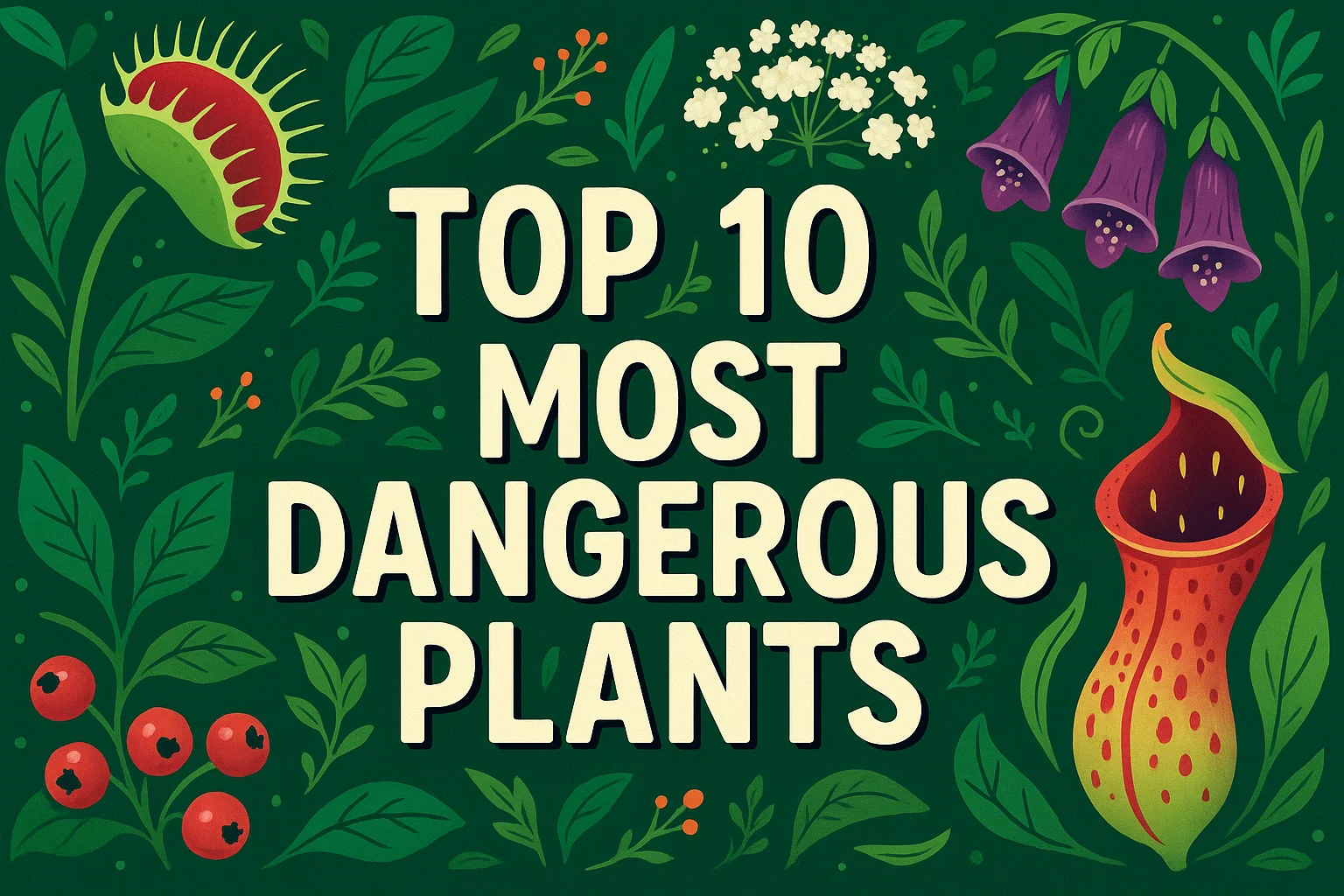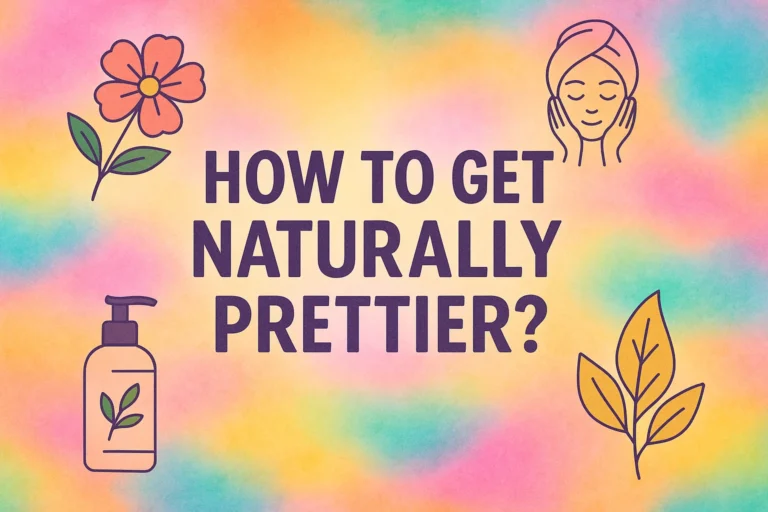Healthy Ideas Discover the Top 10 Most Dangerous Plants You Should Know About
Healthy Ideas: Discover the Top 10 Most Dangerous Plants You Should Know About
Hey there! So, you’ve decided to finally identify that weird, pretty vine taking over your fence. Good for you! But have you ever stopped to wonder if that beautiful bloom in your garden or that interesting shrub on your hike could actually ruin your whole week—or worse?
I used to think the only dangerous plant was poison ivy. Then, on a camping trip a few years back, I had a… let’s call it a ‘too-close-for-comfort’ encounter with some giant hogweed. Let’s just say it involved a frantic call to a park ranger and a newfound, deep respect for the green, leafy things that want absolutely nothing to do with us.
That’s why I wanted to put this list together. It’s not to scare you away from the great outdoors, but to arm you with knowledge. Because let’s be honest, nature doesn’t come with warning labels. Knowing what to avoid is the first step in staying safe while you enjoy your adventures. Ready to meet some of the world’s most infamous botanicals? Let’s dig in.
The Unassuming Assassins of Your Backyard
We often think of dangerous plants as something from a remote jungle, but the truth is, many are hiding in plain sight. They might be in a public park, a neighbor’s garden, or even your own. Their main weapon? Looking utterly harmless.
Deadly Nightshade (Atropa belladonna)
This plant sounds like it’s straight out of a Shakespearean tragedy, and for good reason. With its sweet, shiny black berries and dull green leaves, it looks almost inviting. Don’t be fooled.
- The Danger: Every part of this plant is packed with tropane alkaloids. Ingesting even a couple of berries can be fatal for a child. For adults, it causes a terrifying array of symptoms: dilated pupils, sensitivity to light, blurred vision, confusion, convulsions, and… well, you get the picture. Not a good time.
- Where You’ll Find It: It prefers chalky soil and shady areas, often in wooded regions or sometimes cultivated in gardens (though IMO, that’s a hard pass).
- Fun(ny) Fact: The name ‘belladonna’ means ‘beautiful lady’ in Italian. Why? Historically, women used its juice to dilate their pupils, believing it made them more attractive. Talk about beauty being pain.
Castor Bean Plant (Ricinus communis)
This one is a common ornamental plant, prized for its striking, star-shaped leaves and spiky seed pods. It looks cool and architectural. It’s also the source of one of the deadliest natural poisons on Earth.
- The Danger: The seeds contain ricin, a notoriously potent toxin. Chewing and swallowing just one or two seeds can be lethal. It’s not something you’d accidentally munch on a ton of, but it’s a massive risk for curious kids or pets.
- Where You’ll Find It: People plant it in gardens all over the place for its looks. FYI, it’s also used to make castor oil (the ricin is removed during processing, obviously).
Oleander (Nerium oleander)
This is the ultimate “looks can kill” plant. It’s a popular landscaping shrub in warmer climates, boasting beautiful, fragrant flowers in shades of pink, red, white, and yellow. It’s also horrifyingly toxic.
- The Danger: Every single part of the oleander is poisonous. Ingesting even a small amount can cause severe digestive issues, heart problems, and can be fatal. There are stories of people getting sick from using its twigs as skewers for hot dogs or marshmallows. Seriously, just don’t.
- Where You’ll Find It: All over the southern United States, California, and other Mediterranean climates. It’s literally everywhere, lining highways and decorating hotel lobbies.
The Masters of Disguise: Lookalikes You Don’t Want to Mess With
This category is sneaky. These plants look almost identical to something delicious and harmless. It’s nature’s cruelest trick.
Water Hemlock (Cicuta species)
Botanists often call this the most violently toxic plant in North America. And they’re not exaggerating. It’s a master of disguise, often mistaken for its edible lookalikes like wild parsnip or celery.
- The Danger: It contains cicutoxin, which directly attacks the central nervous system, leading to violent and painful seizures, nausea, and often death. This isn’t a plant you recover from easily.
- Where You’ll Find It: In very wet, marshy areas, hence the name. If you’re foraging near water, be hyper-aware.
- Personal Anecdote: I once saw a patch while hiking and almost mistook it for Queen Anne’s Lace. The key difference? Water hemlock has a smooth, purple-streaked stem and a terrible, parsnip-like odor when crushed. When in doubt, don’t crush, and definitely don’t taste!
Poison Hemlock (Conium maculatum)
Yes, another hemlock. This is the famous one that did in the philosopher Socrates. It’s a biennial plant that can grow incredibly tall, with lacy white flowers that look a lot like other members of the carrot family.
- The Danger: It’s loaded with toxic alkaloids that cause a gradual paralysis of the muscular system. It’s a slow, frightening process that can ultimately stop your respiratory muscles.
- Where You’ll Find It: It loves disturbed areas, ditches, and roadsides. It’s an invasive species in many parts of the world.
The Itchy and Scratchy Brigade
These plants might not kill you (usually), but they will make you profoundly miserable. Their goal seems to be to remind you of your mistake for days on end.
Giant Hogweed (Heracleum mantegazzianum)
My old nemesis. This plant looks like Queen Anne’s Lace on steroids, with huge, umbrella-like white flower clusters and a thick, hairy stem with purple splotches. It’s almost majestic. It’s also a monster.
- The Danger: The sap contains furanocoumarins. When this gets on your skin and is exposed to sunlight, it causes a severe chemical burn. We’re not talking a little rash. We’re talking blisters, third-degree burns, and permanent scarring. If it gets in your eyes, it can cause blindness.
- Where You’ll Find It: It loves moist soil, often along streams, rivers, and in open, disturbed areas.
Poison Ivy, Oak, and Sumac (Toxicodendron family)
The classic trio of misery. You probably know the rhyme: “Leaves of three, let them be.” But did you know poison oak also has three leaves, and poison sumac has clusters of 7-13 leaves? They all contain the same nasty oil: urushiol.
- The Danger: Urushiol triggers a nasty allergic contact dermatitis in most people—redness, intense itching, and awful blisters. The oil can stick to your clothes, your gardening tools, and even your pet’s fur, so you can get exposed days later.
- Where You’ll Find It: Everywhere. Woods, your backyard, along fences. They are the ultimate opportunists.
The Deceptively Delicious
These plants produce berries or fruits that look incredibly tempting, especially to children. Their danger lies in their inviting appearance.
Doll’s Eyes (Actaea pachypoda)
This plant is just creepy. It has a single white berry with a single black dot in the middle, making it look exactly like a old-fashioned porcelain doll’s eye. It’s a clear warning if I’ve ever seen one.
- The Danger: The entire plant, but especially those bizarre berries, is toxic to humans. It has a sedative effect on cardiac muscle tissue, which is as bad as it sounds.
- Where You’ll Find It: In the dense, woody forests of North America.
Yew (Taxus species)
Yews are common evergreen shrubs or small trees used heavily in landscaping. They have soft red berries that look like they might be a tasty treat. Here’s the twist: the fleshy red part around the seed is actually not poisonous. But the seed inside, and every other part of the plant, absolutely is.
- The Danger: The plant contains taxine alkaloids, which cause dizziness, dry mouth, and severe cardiac distress. It can be fatal.
- Where You’ll Find It: In hedges, foundation plantings, and cemeteries across temperate regions.
The Truly Bizarre and Exotic
Okay, this one might not be in your local park, but it’s too fascinating (and terrifying) to leave out.
Gympie-Gympie (Dendrocnide moroides)
Found in the rainforests of Australia (because of course it is), this plant is the stuff of nightmares. It looks like a harmless, heart-leaved plant, but it’s covered in tiny, syringe-like hairs filled with a potent neurotoxin.
- The Danger: Brushing against it is described as being sprayed with hot acid and electrocuted at the same time. The pain is so excruciating it has driven people to madness, and the agony can last for weeks or even months. The hairs can stay in your skin and reactivate years later if you touch them. Seriously, Australia, what is wrong with you? :/
- Where You’ll Find It: Thankfully, only in the rainforests of northeastern Australia.
Staying Safe Out There
So, what’s the takeaway from our tour of botanical terror? Don’t panic and never go outside again? Nah. Just be smart.
- Learn the big ones. Memorize what poison ivy, oak, and hemlock look like.
- The Golden Rule: Never eat any berry, mushroom, or plant you can’t identify with 100% certainty.
- Wear protection. Long sleeves and pants are your friends when hiking or gardening in unknown territory.
- Teach your kids. Show them pictures of the most common dangerous plants and instill a “look, don’t touch” policy for the unknown.
Knowledge is power. Knowing about these plants isn’t about fear; it’s about respect. It allows you to explore and garden with confidence, appreciating the incredible—and sometimes deadly—beauty of the natural world without any unpleasant surprises.
Have you ever had a run-in with a plant you wish you hadn’t? I’d love to hear your story (and maybe wince in sympathy). Share your experiences and let’s all learn from each other! Stay safe and happy exploring







